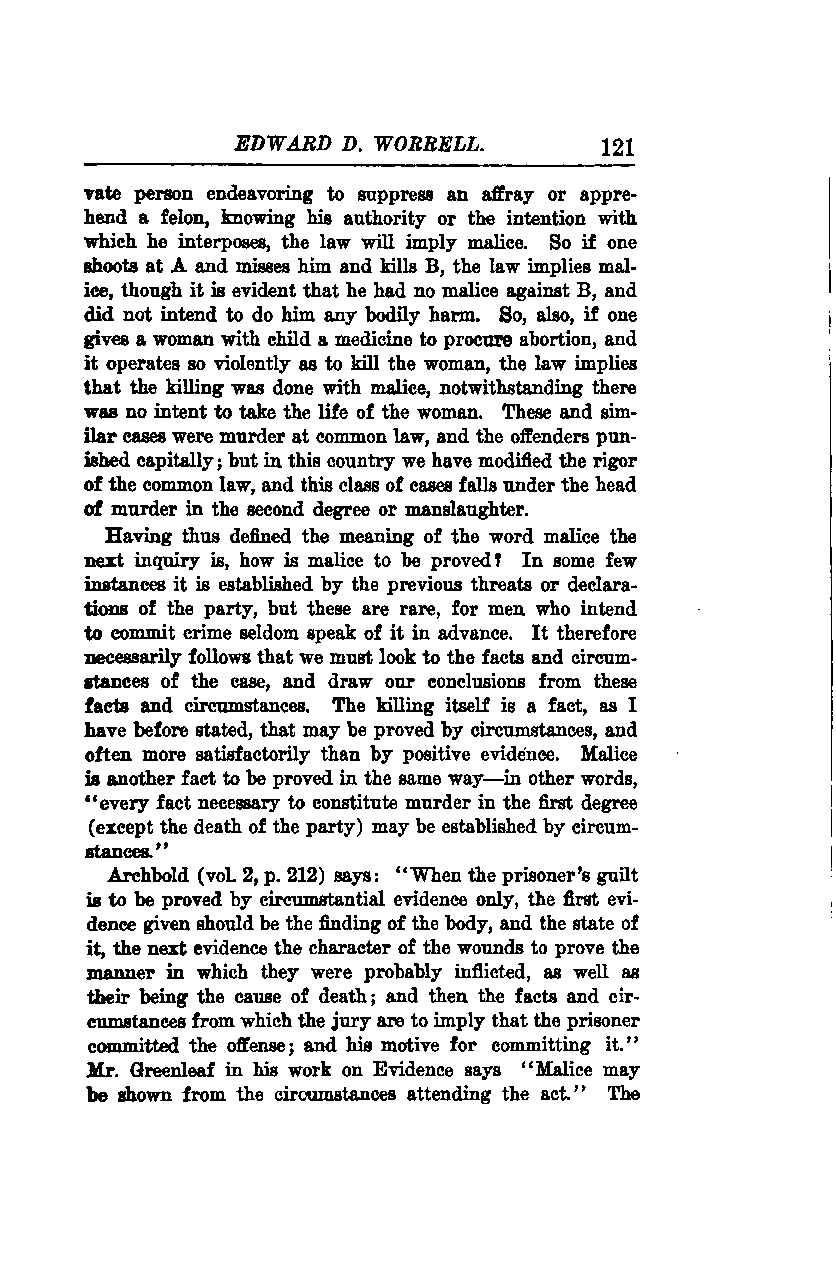Reading Time: 3 minutes [410 words]

Here is the translated text as follows:
EDWARD D. WORRELL. 121
If a private person endeavors to suppress an affray or apprehend a felon, and another person, knowing his authority or the intention with which he interposes, kills him, the law will imply malice. Similarly, if one shoots at A and misses him but kills B, the law implies malice, even though it is evident that he had no malice against B and did not intend to do him any bodily harm. Likewise, if one gives a woman with child a medicine to procure abortion, and it operates so violently as to kill the woman, the law implies that the killing was done with malice, notwithstanding there was no intent to take the life of the woman. These and similar cases were considered murder at common law, and the offenders were punished capitally. However, in this country, we have modified the rigor of the common law, and this class of cases falls under the head of murder in the second degree or manslaughter.
Having thus defined the meaning of the word "malice," the next inquiry is, how is malice to be proved? In some few instances, it is established by the previous threats or declarations of the party, but these are rare, for men who intend to commit a crime seldom speak of it in advance. It therefore necessarily follows that we must look to the facts and circumstances of the case and draw our conclusions from these facts and circumstances. The killing itself is a fact, as I have before stated, that may be proved by circumstances, and often more satisfactorily than by positive evidence. Malice is another fact to be proved in the same way—in other words, "every fact necessary to constitute murder in the first degree (except the death of the party) may be established by circumstances."
Archbold (vol. 2, p. 212) says: "When the prisoner's guilt is to be proved by circumstantial evidence only, the first evidence given should be the finding of the body, and the state of it; the next evidence, the character of the wounds to prove the manner in which they were probably inflicted, as well as their being the cause of death; and then the facts and circumstances from which the jury are to imply that the prisoner committed the offense, and his motive for committing it." Mr. Greenleaf, in his work on Evidence, says, "Malice may be shown from the circumstances attending the act."